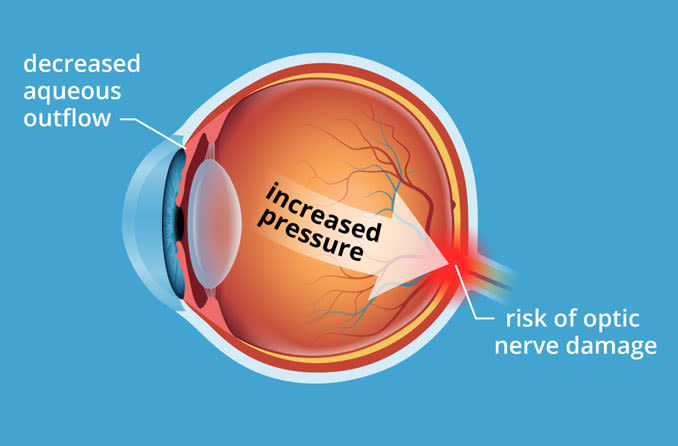Ocular hypertension: Five causes of high intraocular eye pressure

Ocular hypertension means the pressure in your eyes — your intraocular pressure (IOP) — is higher than normal. Left untreated, high eye pressure can cause glaucoma and permanent vision loss in some individuals.
However, some people can have ocular hypertension without developing any damage to their eyes or vision, as determined by a comprehensive eye test and visual field testing.
Researchers have estimated that that up to 9.4 percent of people age 40 and older have high eye pressure, and that the condition is 10 to 15 times more likely to occur than primary open-angle glaucoma, the most common type of glaucoma.
How do you know you have ocular hypertension?
You can't tell by yourself that you have ocular hypertension, because there are no outward signs such as eye pain or red eyes. It can only be detected by an optometrist or ophthalmologist.
During a comprehensive eye test, your optometrist will measure your IOP and compare it with normal levels. An eye pressure reading of 21 mmHg (millimetres of mercury) or higher generally signifies ocular hypertension.
If you picture your eye as a globe inflated by pressure, you can better understand why ocular hypertension should be monitored. Pressure that is too high or that continues to increase exerts a force within your eye's interior that can damage the eye's delicate optic nerve, causing glaucoma.
What causes high eye pressure?
Factors that cause or are associated with ocular hypertension are virtually the same as the causes of glaucoma. These include:
Excessive aqueous production
The acqeous is a clear fluid that is produced inside the eye by a structure located behind the coloured iris called the ciliary body. The aqueous flows through the pupil and fills the anterior chamber of the eye (the space between the iris and the cornea).
The aqueous drains from the eye through a structure called the trabecular meshwork, in the periphery of the anterior chamber, where the cornea and iris meet. If the ciliary body produces too much aqueous, the pressure in the eye increases, causing ocular hypertension.
Inadequate aqueous drainage
If the aqueous drains too slowly from the eye, this will disrupt the normal balance of aqueous production and drainage, which will cause high eye pressure.
Medications
Certain medications can have the side effect of causing ocular hypertension in some individuals. For example, medications containing steroids used to treat asthma and other conditions have been shown to increase the risk for ocular hypertension. If you have been prescribed steroid medication for any reason, ask your optometrist how frequently you should have your IOP checked.
Eye trauma
An injury to the eye can affect the balance of aqueous production and drainage from the eye, possibly leading to ocular hypertension. Sometimes this can occur months or years after the injury. During your routine eye checks, be sure to mention to your optometrist if you have experienced any eye trauma recently or in the past.
Other eye conditions
Ocular hypertension has been associated with a number of other eye conditions, including pseudoexfoliation syndrome, pigment dispersion syndrome and corneal arcus. If you have any of these conditions, your optometrist may recommend that you have more frequent eye test including eye pressure measurements.
Also, race, age and family history play a role in your risk for ocular hypertension and glaucoma. Though anyone can develop high eye pressure, African-Americans, people over age 40, and people with a family history of ocular hypertension or glaucoma are at greater risk.
People with thinner-than-normal central corneal thickness measurements also may be at greater risk of ocular hypertension and glaucoma, according to some research.
Ocular hypertension treatment
If your optometrist determines you have ocular hypertension, he or she might prescribe eye drops to reduce your eye pressure.
As these medications can have side effects, some optometrists choose to monitor your IOP and take action only if you show other signs of developing glaucoma.
In some cases (or if eye drops are ineffective in reducing your IOP), your optometrist might refer you to an ophthalmologist for other glaucoma treatment measures, including glaucoma surgery, to treat high eye pressure.
At a minimum, because of the increased risk for glaucoma with ocular hypertension, you should have your IOP measured at frequent intervals to monitor the condition.
Page published on Monday, 16 March 2020






